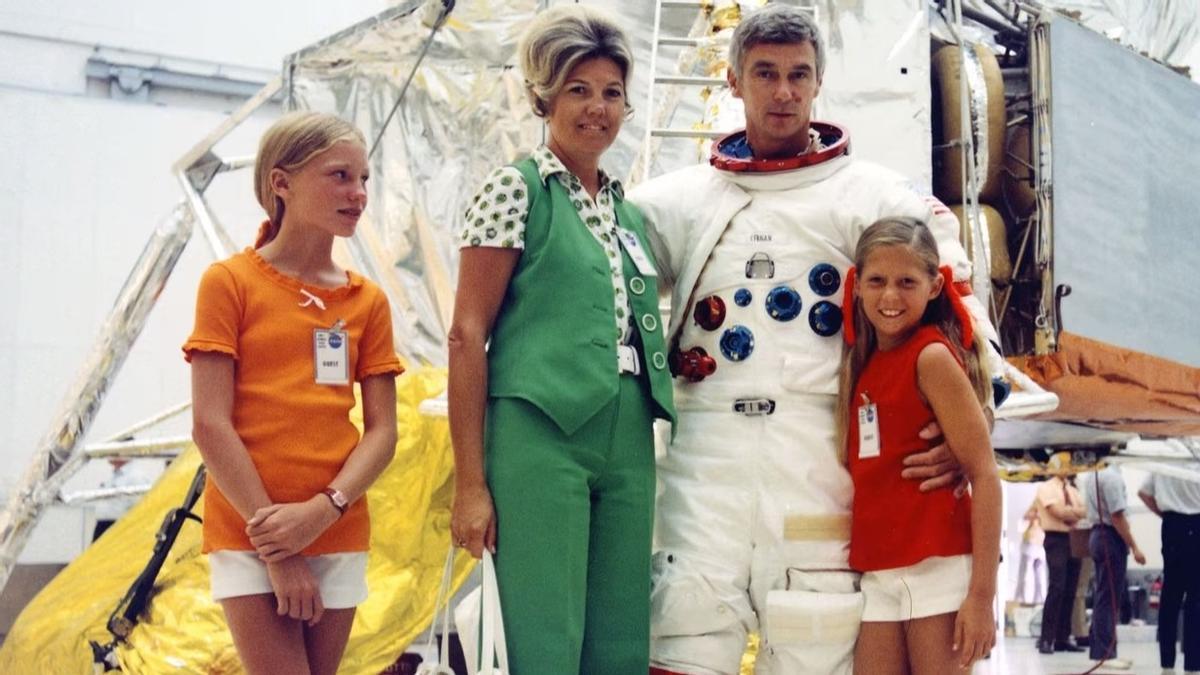On December 7, 1972, exactly fifty years ago, the last manned mission to the moon. Apollo 17 took off at night, landed on the lunar surface, carried out a series of scientific experiments, and returned safely to Earth. Half a century later, the history of the last manned lunar voyage It explains why humanity stopped going to the Moon and why it is now trying to launch a new manned program to set foot on the Earth’s satellite again. Fasten your seatbelts because this chronicle comes with the odd shock.
Lets start by the beginning. To understand the origins of the space race (or why the amount of humanity invested a force of effort and money to see what was beyond the confines of our planet) you have to go back to mid fifties the last century. The world had just emerged from World War II, geopolitical tensions were in the air, and the United States and the Soviet Union were locked in a Cold War to demonstrate their leadership. It was in this context that these superpowers began a struggle to see who were the first to «conquer» space Exterior. First with the sending of satellites and later with the first manned missions.
The origins of the Apollo space program
The apollo space program was born in the The 60s to lead US exploration projects. The first flight of this project, known as Apollo 1, took off at the end of February 1966. In the next four years they launched a total of 10 missions more of this program until, finally, on July 16, 1969, Apollo 11 achieved the «small step for man, but the giant step for humanity» that was the first walk of a human being off their mother planet.
after the Apollo 11 successFollowed live by more than 600 million viewers around the world, the Americans planned a series of more launches to continue exploring the Moon (and everything is said, demonstrating its technological power against its Soviet rivals). Just four months after the Armstrong, Aldrin, and Collins voyage the Apollo 12 voyage was launched. Quite a success. And five months later, Apollo 13. And this is where history began to twist.
The inflection point
The Apollo 13 voyage, led by astronauts Lovell, Haise and Swigert, nearly ended in tragedy after the oxygen tank explosion in one of the mission modules. This incident prevented the landing of the ship and caused oxygen, water and power leaks in the spacecraft. The astronauts had to survive for days with strict food and water rationingfreezing temperatures due to heating problems already a dangerous buildup of carbon dioxide in the space module. This mission, defined by Lovell himself as «a successful failure», revealed the dangers that lurked behind space missions and, in a way, opened up the debate on the continuation of this type of project.
in tan only six yearsthe program carried out by Apollo a total of 17 manned flights. The project is estimated to cost about 24,500 million dollars of the time (the equivalent of 152,000 million dollars today, according to calculations by ‘Forbes’ magazine). The first releases managed to attract the attention of hundreds of millions of viewers around the world, but flight after flight the interest was dissipating and, once relations with the Soviet Union were ‘relaxed’, keeping pace with the space program became unfeasible. Both economically and narratively, it was very difficult to justify the need to invest so much money in traveling to the Moon.
From Apollo to Artemis
The last flight of the Apollo program was, paradoxically, one of the most prolific of the entire project. Apollo 17 was the first space mission to include a scientist in his crew (geologist Harrison Schmitt), one of the ones that carried out the most scientific experiments on the Moon and the one that improved the most samples of lunar soil to bring back to Earth. He also stands out for having achieved moon stay recordthe longest lunar orbit time and the longest distance traveled in another celestial body (not to mention that in the last moments of the mission Captain Eugene Cernan he marked his daughter’s initials on the lunar dust and thus became the only human being to have written on the surface of the Moon). «We discovered the so-called ‘orange soil’which turned out to be one of the most important discoveries about the origins of the Moon», recalls astronaut Harrison Schmitt in an interview published this Wednesday by NASA.
Related news
After the success of Apollo 17, the United States had at least three other scheduled releases (which corresponded to Apollo 18, 19 and 20). The flights ended up being canceled due to lack of budget and, for decades, the lunar dream was filed away in a drawer. Fifty years later, just on the anniversary of the last manned mission to the Moon, everything indicates that humanity is preparing to set foot on the dusty lunar soil again with the artemis program.
This new project, whose first test mission took off only a month ago, is led by the United States, Europe and a group of private companies. The project plans to bring first women astronauts to the moon in 2025 and, in turn, to lay the foundations so that one day earthlings can reach the red planet and beyond. So far, only 12 Earthlings have set foot on the lunar surface. The launch of the first Artemis has already opened a new chapter in the history of space exploration and in just a few years, if there are no unforeseen events, it will add more pages to the lunatic chronicles of humanity.

